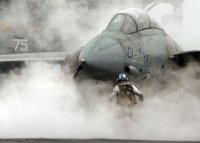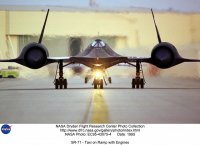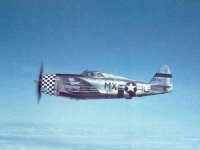OneManGang
Senior Member
- Joined
- Sep 7, 2004
- Messages
- 2,037
- Likes
- 9,673
Tennessee vs The Maxims vs Pittsburgh
As events unfolded Saturday in Neyland Stadium, your fearless Scribe was searching for some analogy to describe Tennessee's troubled passing attack. Vol quarterbacks threw over, under, around and sometimes more or less toward their wide receivers.
I had just finished a book on the 1968 Battle of Hue where elements of the 1st and 5th Marine Regiments destroyed three NVA divisions and a number of VC units in an epic four week fight. That memory led to a scene where a squad of Marines were pinned down by NVA machine gun fire and took cover behind a rock wall. One of the Marines simply stuck his M-16 over the top of the wall and emptied a magazine in the general direction of the enemy. The troops called this tactic “Spray and Pray.”
I had my analogy.
Along with the Vols' “Spray and Pray” passing game, we fans were treated to a variety of technical malfunctions that did little to enhance the game experience. The mikes on the officials were not synced up with the speakers and one had a hard time discerning what the zebras were saying. On the other hand, for whatever reason, the Pride of the Southland has virtually disappeared from in-game music to be replaced by hip-hop and hip-hop-modified rock songs that blast at decibel levels visible on the seismographs in the Geology Building. CharterVol and I have christened this “Johnny-Hop.” I mean, I'm happy that Sterling “The Pearl” Henton has found a niche, but, still.
But the kids seem to like it, so I guess I'll learn to live with it.
Speaking of the officials, did anyone else get the impression they were sort of making things up as they went along? The next time you feel like whining about the quality of SEC refs, think about this tribe.
********
It can be argued that the iconic American fighter of the last quarter of the 20th Century was the Grumman F-14 Tomcat. It was big, it was fast and damned if it didn't just LOOK superior even sitting on the ground. It even starred in two movies, TOPGUN (1986) and The Final Countdown (1980).
The Grumman F-14 Tomcat. (US Navy)
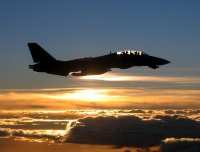
Grumman's Big Cat arose, Phoenix-like, from the ashes of Kennedy-era Defense Secretary Robert McNamara's plot to have one aircraft be the primary platform for the Air Force, Navy and Marine Corps. The F-111 was the chosen aircraft. To go into that whole fiasco is far beyond the scope of this but suffice to say that the version he wanted to foist on the Navy, the F-111B, was NOT what the Navy wanted or needed.
Once McNamara and his minions were safely out of the way, the Navy went to Grumman, which had been building fighters for them since the FF-1 in 1931. The Grumman team rolled up their sleeves, broke out their slide rules and a clean sheet of paper. They worked with active Navy pilots, fresh from combat over North Vietnam, asking them what they wanted in a new fighter. What emerged for its first flight in 1970 was a big fighter with twin tails, swing wings, two huge turbofan engines on either side of a wide and flat rear fuselage that also served to increase lift, a two-place cockpit where a pilot and his RIO (Radar Intercept Officer) managed the AWG-10 radar fire-control system which could employ AIM-7 Sparrow and AIM-9 Sidewinder and the huge AIM-54 Phoenix missiles, the latter with a range of over 100 nautical miles and finally a 20mm Vulcan cannon for close-in “knife fights.” In keeping with the outsized nature of the Big Cat, for instance, the horizontal stabilizers at the rear of the plane were each bigger than the wing of an A-4 Skyhawk! The Tomcat would be the first “4th Generation” jet fighter to see operational service.
As part of the design studies, another group of Grumman engineers took everything known about Soviet fighters and possible future developments there and came up with a design they called the “Fearless.” During an interview while the Cat was undergoing test flights, the president of Grumman held up a model of the Fearless and proclaimed, “If the Russians were to build this thing tomorrow, the Tomcat would beat it.”
Northern part of the Arabian Gulf, 13 November 1991
Lt. Commander (LCDR) Joe “Reb” Edwards and his RIO, LCDR Scott “Grundy” Grundmeier were flying a post-maintenance check flight in an F-14B, call sign DAKOTA 205 of VF142*, the “Ghost Riders.” VF142 and sister squadron VF143 were embarked as part of the airgroup on the USS Dwight D. Eisenhower (CVN-69). DAKOTA 205 had had some work done on her flight control system and this mission was to ensure everything was working up to spec. Another VF142 F-14 had undergone engine replacements and was out with them.
The other plane accelerated to over Mach 1 to wring out the new power plants and pulled ahead. Reb and the other pilot had decided that after the check flight portions were done they'd engage in a bit of ACM (Air Combat Maneuvering) to keep the blood moving.
Reb pushed the throttles forward and went supersonic to catch the other plane. As they neared the intercept point he put the nose down a bit and went into a right-hand turn putting “G” on the plane.
BOOM!
Thinking something had exploded, Reb took a quick survey of his situation. His canopy was gone and the three panels of the windscreen were “spider-webbed” with cracks and impossible to see through. He couldn't see out of his right eye and there was glass in his left that made its presence known every time he tried to blink. Also his right arm was hurting badly, and felt broken and the force of the impact had also slammed into his right shoulder and broken his collar bone under a survival pack. There was blood and broken glass all over the cockpit. Now he scanned his instruments and was somewhat surprised to find that, mechanically, the Tomcat was OK. DAKOTA 205 was at 28,000 ft and doing a bit over 600 knots.
What had actually happened was the radome or nose cone at the very front of the aircraft had come loose and broken backwards, shattering the canopy before being ripped away by the slipstream. All this happened in a fraction of a second. Reb couldn't see the nose cone from his position and didn't really know what happened until later.
Reb cut the throttle and began a spiraling descent leveling out at 10,000 ft and 250 knots. As they descended he tried to raise Grundy but got no answer. Checking one of the mirrors affixed to the frame of the windscreen, he saw Grundy slumped over and figured he was at best badly injured. Now he tried to raise the “Ike,” which was 35 miles away, on radio and again got no response. Investigating further Reb discovered his oxygen hose with its attendant microphone leads had been broken off. A bad situation was now immeasurably worse.
As he was looking in the mirror he saw his face and damaged right eye and figured this was his last flight.
He could breath at 10,000 feet and headed back to the carrier. Reb now started a series of Qualitative Evaluations he had learned during his time as a test pilot to find what the plane could still do. Again, with the exception of some admittedly important instruments, the Big Cat was doing OK.
As he approached the carrier, he dropped his landing gear, tail hook and lowered the flaps flying along the port side of the ship signaling “NORDO” no communications and requesting an emergency landing. Unknown to Reb, Grundy had established a radio link with the Ike once they got within 3 miles. Grundy had hunched over to avoid the wind blast and now was telling the carrier what he knew and the ship was assuring him they'd be ready.
The commander of the Eisenhower was Captain Bill Cross, himself a former F-14 driver. Capt. Cross had trained his watch officers to do fine maneuvers using the outboard propellers of the massive ship to maintain course with minimal deviations precisely for situations like this. He ordered the Ike brought to course 322 to put the wind over the deck and give his pilot every chance.
Reb saw the ship turning and knew it would take about ten minutes to complete the maneuver. He spent that time flying two practice approaches to make sure he could see “the ball” - the mirror landing system. Using this, the pilot centers “the ball” light with two light bars on either side. One thing naval aviators are drilled on is “flying the ball” which, when properly done, plants the plane on the 3rd wire of four marking a “roger pass” or perfect landing. The only way Reb could see the ball was to lean his head out of the left side of the cockpit.
Finally, on his third approach, with his head out the left side, Reb lined up on the ball and made a textbook approach … until the very last second. Reb admits he took his eye off the ball and “spotted the deck” which caused the F-14 to veer a hair left …
But not enough to matter.
DAKOTA 205 caught the third wire.
Reb and Grundy were home.
Reb was flown to a hospital in Bahrain where eye specialists fixed him up.
LCDR Edwards and LCDR Grundmeier were both awarded the Distinguished Flying Cross for that day's exploits.
A subsequent incident investigation found that the maintainers had forced (read: used a hammer) the latch holding the radome into place and that when Reb put G on the plane it broke loose. The total cost to return DAKOTA 205 to “operational” was just over $150,000.00.
On 22 January 1998, STS-89, a mission by the Shuttle Endeavor to bring supplies to the Mir space station, thundered aloft from Launch Complex 39A at the Kennedy Space Center.
Sitting in the pilot's seat was Commander Joe F. “Reb” Edwards.
Oh, and bye the bye, among the many awards and honors Reb has accrued over the years is his MS degree from the University of Tennessee earned at the UT Space Institute at Tullahoma.
*Navy fighter squadrons are designated as VF. Currently all active fighter squadrons use the F/A-18 Hornet and are designated “VFA” for “heavier than air, fighter, attack.”
**********
So, how did the Vols do against The Maxims?
1. The team that makes the fewest mistakes will win.
Tennessee had only two more yards net rushing than they had in PENALTIES. Let that one percolate for a while. Then there were the three turnovers. And finally the offense got stopped and turned the ball over on downs inside the Pitt 5 yard line. Against that array of fail, all Pitt really had to do was show up.
2. Play for and make the breaks. When one comes your way … SCORE!
Tennessee has played eight quarters of football so far this season and the defense has generated exactly ZERO turnovers. The blocked punt on Pitt's first series accrues to the special teams.
3. If at first the game – or the breaks – go against you, don't let up … PUT ON MORE STEAM!
OK. this rant has been building awhile so this may be the best place for it. The first move Tennessee's defensive line makes when the ball is snapped is vertical. They stand up. Also, #51 seems to wait about a half count after the snap before making any move at all. What makes this especially egregious is that Pitt's left guard was telegraphing the snap. Why nobody wearing orange either on the field or in the booth picked up on this is beyond me. Whenever Pitt was in the shotgun, their left guard would look back and watch for the quarterback to give the signal. Then he would make a motion with his right hand and arm telling the center to snap the ball which he would do within a one count. Now, logic would seem to dictate that this should be pointed out to everyone in the box with special concentration on the linebackers to time their blitzes to the guard's signal so they could be past the guard and center before either could come out of their stance. Incredible.
Allowing Pitt to score 27 points in the second quarter added insult to injury.
4. Protect our kickers, our quarterback, our lead and our ballgame.
Joe Milton went out injured and was replaced by Hendon Hooker who carried on with “spray and pray” but did improve as the game went on. On the negative side, Tennessee allowed five sacks. Allowing Pitt to score 27 points in one quarter violated this Maxim in its essence.
5. Ball! Oskie! Cover, block, cut and slice, pursue and gang tackle … THIS IS THE WINNING EDGE.
Pitt caused three Tennessee turnovers. The Vols caused zero Pitt turnovers. Winning edge? Pitt. Nothing else to say.
6. Press the kicking game. Here is where the breaks are made.
Tennessee won the special teams' duel hands down. Blocked a punt on Pitt's first possession and then had a “kick six” called back because …, well, … the refs never were quite clear and seemed to declare that there was a reason but they'd get back to us on what it was.
7. Carry the fight to Pitt and keep it there for sixty minutes,
The defense took the second quarter off and the offense took the third quarter off, Given Tennessee's manifest weaknesses one would think Head Vol Heupel and his assistants will spend a lot of time this week pointing out the the Vols can't afford to take a single play off, let alone an entire quarter. They did this same thing against Bowling Green but doing so against Pitt was fatal.
It would be remiss of your Humble Scribe if he did not point out that Saturday was the 20th anniversary of the 9/11 terrorist attacks. For the 2000+ Americans who died in the initial attacks and those 5,000 or so brave Americans who have died in wars since then made pointless by our feckless political leadership. I can only offer this: Eternal rest grant unto them, O Lord, and let perpetual light shine upon them.
Gen. George Marshall, one of the finest Americans to ever live, once said that a democracy cannot survive a Seven Years War. Draw your own conclusions.
Further Reading
Most of the story of Reb Edwards, including an interview with him, can be found on Ward Carroll's excellent YouTube Channel. Ward was a RIO in VF143 on the “Ike” and was actually in the air during this incident.
Also check out:
How F-14 Tomcat pilot with missing radome made an emergency landing - Fighter Jets World
Crash landing a crippled Tomcat | Tales | F-14 Tomcat
Reb and Grundy come home. (US Navy)
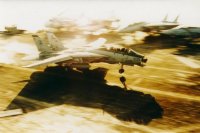
Last edited:


